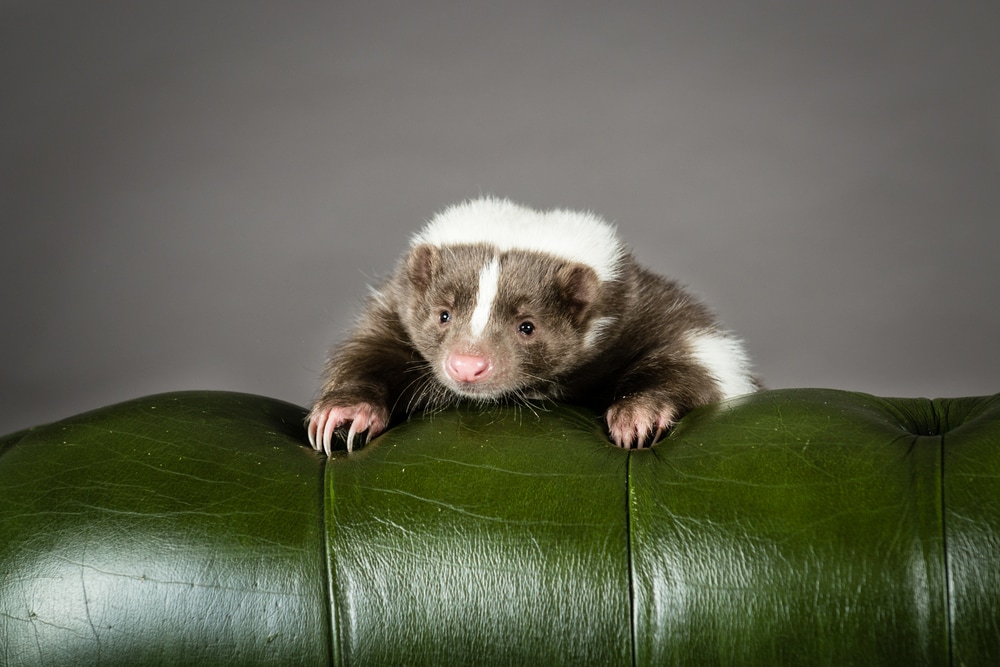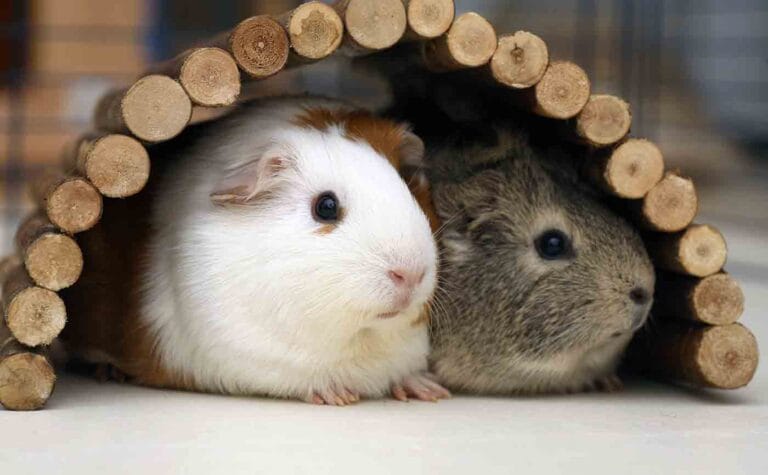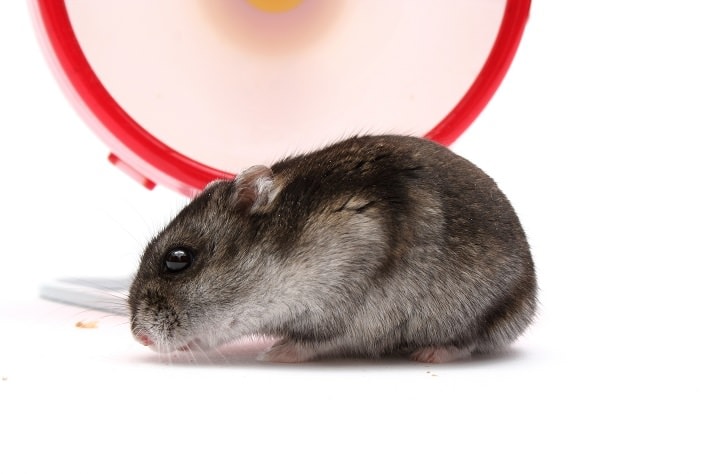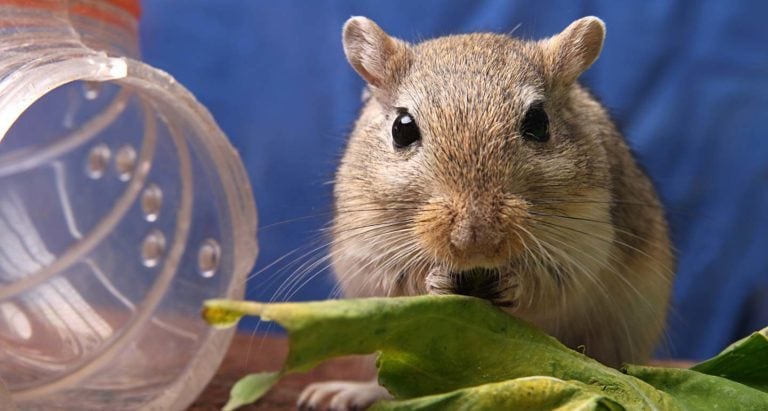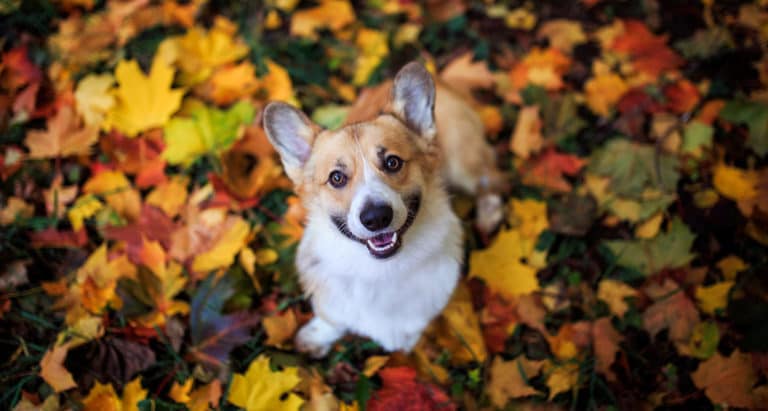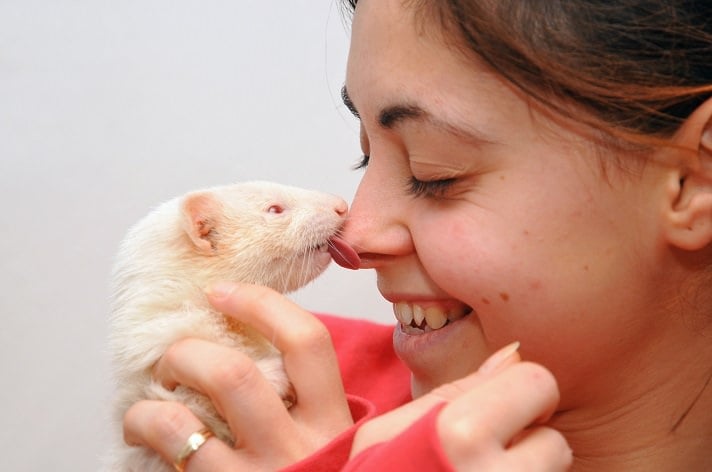A skunk companion is sure to turn heads — and it might even send passersby running. After all, the ability to spray foul-smelling fluid is what skunks are best known for. Skunks are not commonly kept as pets and they are illegal or restricted in many states, but those who can share their home with a skunk companion have a first-row seat to some interesting behavior.
1. No Way Home
Unlike cats or dogs, skunks are said to have no homing instincts. If your pet skunk gets outside, he will likely just keep on walking. This lack of homing skills makes ensuring that your skunk doesn’t escape outside a No. 1 priority. Since most pet skunks are de-scented, they won’t have this crucial self-defense weapon to survive outdoors.
2. Daydreamer
Pet skunks might be inclined to sleep during the day. They aren’t lazy; they are crepuscular. This means that they are most active during dusk and dawn. If you spy your skunk napping during the day, give him his space and save playtime for around dinnertime and in the morning.
3. Nose To The Ground
Skunks’ strongest sense is that of smell (ironic for an animal that is best known for its odor!). That means you’re going to see your skunk with his head down a lot of the time, especially when walking. Skunks like to follow their noses when they move about.
4. Can I “Borrow” This?
A pet skunk might be inclined to help himself to blankets, towels, clothing and other comfy material. He’ll make a backward-scoot run for it with his pilfered item and make himself a comfy rest spot.
5. A Digging They Will Go
Skunks have long claws, much longer than you would expect with a cat or dog. In the wild, these long nails help them dig up insects to eat. Inside your home, your pet skunk will also have this natural instinct to dig, which can lead to dug-up carpet, upholstery and other home furnishings. Before you allow your skunk companion free-roam of a room, block off areas you don’t won’t dug up.
6. Stomps And Hisses
Many people have the impression that crossing paths with a wild skunk will automatically lead to a spray of something awful. While it’s true that skunks are inclined to utilize more of the fight rather the flight response when they feel threatened, they will give fair warning to people (or dogs!) who get a little too close for their comfort.
A skunk might charge at the object of his aggression and follow it up with an audible exclamation by stomping his feet and hissing. If that doesn’t get his point across, a smelly spray certainly will. A pet de-scented skunk, might do a similar charge/stomp/squeal but it is said to be a sign of play.
7. Pig Sounds
Skunks are purported to be relatively quiet but that’s not to say that they are silent pets. A skunk might hiss, squeal like a pig, whimper or do a number of other sounds.
8. Lip Smacking Good
If you hear your skunk smacking his lips, don’t worry; he didn’t get into your lip balm. A lip-smacking skunk is a happy, relaxed skunk.
9. Curious Creatures
Skunks have a hard-wired “curiosity” gene. Those who share their homes with pet skunks report that they are adept at getting into cabinets and pantries and pretty much anything that piques their interest (or their sense of smell), which is why cabinets should be secured or a skunk-proof barrier put up.
10. A winter’s Snooze
In the wild, skunks seem to sense the threat of being snowed-in while in their burrow, and so they are said to eat a little more in the fall months and sleep a bit longer during winter to conserve energy. This instinct may or may not translate into long winter naps and bigger fall appetites.
By: Laura Doering
Featured Image: Via Shutterstock/Nathan Clifford
Share:
